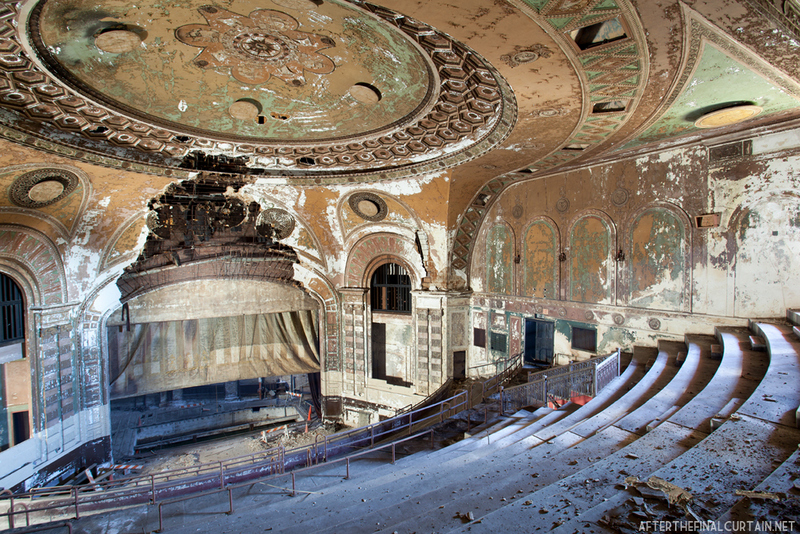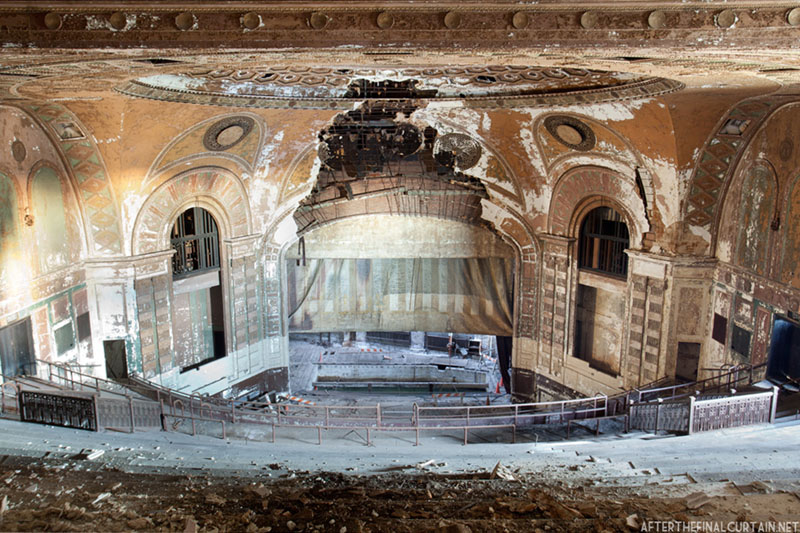 Image from After The Final Curtain
Image from After The Final Curtain
Welcome back to After the Final Curtain, featuring the photography and writing of Matt Lambros who documents the neglect of America’s greatest theaters in his website afterthefinalcurtain.net
The Shore Theatre opened as the Loew’s Coney Island Theatre on June 17, 1925. The 2,387 seat theater was built by the Chanin Construction Company, which was also known for the construction of the now demolished Roxy Theatre in Manhattan. Before opening, the theater was leased to the Loew’s theater chain. The Shore was designed in a Renaissance revival style by the Reilly & Hall architecture firm, who were proteges of famed theater architect Thomas W. Lamb.

The theater was decorated with a nautical theme
The Shore opening was presided over by Loew’s theater chain founder Marcus Loew, and included many of that era’s stars of stage and screen. Some of the celebrities at the opening were Barbara La Marr, Mae Busch, Dorothy Mackaill and Virginia Lee Corbin. The opening feature was the movie “The Sporting Venus” and a live performance by conjoined twins Violet and Daisy Hilton. According to an account by the “Brooklyn Citizen,” the crowd at the opening was so large it had to be cordoned by police. The theater was designed to be a combination house, showing both vaudeville and motion pictures, but eventually phased out the vaudeville performances.

Some of the proscenium arch and ceiling have collapsed since the theater closed
Loew’s ended it’s lease in 1964, when it was taken over by the Brandt Company. The theater was then renamed Brandt’s Shore Theatre. A year later the Brandt Co. switched the theater to a live performance venue. They attempted to appeal to Brooklyn’s large Jewish population by presenting stage shows such as “Bagels & Yox.” When that failed to catch on they switched to burlesque shows before resuming showing motion pictures.
By the early 1970’s, the Shore had turned to exploitation and eventually adult films. The theater closed permanently in March of 1973. The seats on the main level were removed and the floor was leveled to convert the space into a bingo hall. The Shore Theatre facade was declared a historical landmark by the Landmarks Preservation Commission on December 14, 2010. The inside of the theater is not landmarked, and could be demolished.

A compass in the center of the ceiling

View of the top of the auditorium from the balcony

View from the side of the balcony

All of the seats were removed when the main level was converted into a bingo hall

Another view of the auditorium from the balcony

More of the nautical plaster work that covers the auditorium ceiling
See more of After the Final Curtain on Untapped and get in touch with the author @mattlambros.








